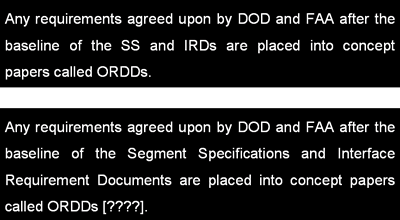While acronyms help you write about technical subjects in a concise manner and are necessary in technical reports, they are often overused, especially in high technology fields. Two technical experts may happily chat away or send each other e-mail about a pseudorandom generator on the LSB of the CB and CR or about rerouting OAM messages using UDP/IP in a CDPD Radio. But for non-experts, this language might as well be alphabet soup. The following diagram illustrates the pattern for acronyms.

To avoid turning your document into gobbledygook, keep the following three strategies in mind:
- Introduce acronyms, providing the words they replace the first time you use them.
- Limit your use of acronyms, restricting the number in individual sentences.
- Repeat the words acronyms replace periodically and use few if any acronyms in introductions, conclusions, abstracts, and executive summaries.
If an acronym is well known by your readers (e.g., IBM, FBI), then it can be used without concern. Also, the greater the technical expertise of your readers, the higher their tolerance for acronyms.
- Introduce acronyms, providing the words they replace the first time you use them.
- Do not define common acronyms such as IBM.
- Limit your use of acronyms, restricting the number in individual sentences (2 or 3 maximum).
- Repeat the words acronyms replace periodically and use few, if any, acronyms in introductions, conclusions, abstracts, and executive summaries.
- Provide a glossary if your report has many acronyms.